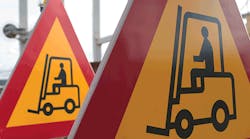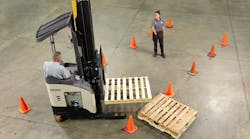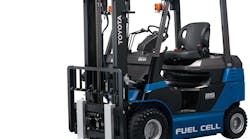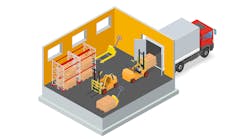The Occupational Safety and Health Administration (OSHA) can now order safety abatement measures for safety violations in all of a company's facilities, including locations that haven't been inspected.
This Dec. 7, 2015 decision by an OSHA administrative law judge is significant because it seems to reverse one issued in 2013 severely restricting the agency's ability to seek enterprise-wide abatement.
The recent case stemmed from a single inspection OSHA conducted at the Billerica, Mass., facility of Central Transport that found violations of the lift truck safety standard, among other violations, leading to $330,800 in fines.
After the company contested the initial citations, OSHA sought abatement of the industrial truck hazard at not just at Billerica but also at 170 other terminals Central Transport operates. The company asked the Occupational Safety and Health Review Commission to strike down this enterprise-wide abatement, arguing it violated the Occupational Safety and Health Act.
The administrative law judge (ALJ) assigned by the commission disagreed, and the abatement order will stand while the company challenges it in court. What's odd is that OSHA was rebuffed in by a different ALJ 2013 when it attempted a similar enterprise-wide abatement order in a case involving an elevator repair company.
Michael Felsen, regional solicitor for the Labor Department for New England, didn't hesitate to call the Central Transport decision "significant and precedent-setting," noting it is the first decision by an OSHA ALJ "expressly finding that the OSHRC may have the authority under the OSH Act to order abatement measures beyond the specific violations identified in the citations."
Kim Stille, OSHA's regional administrator for New England, opined, "When an employer has hazards occurring at multiple locations, common sense and reasonable worker protection law enforcement both dictate that the employer take corrective action to safeguard the health and well-being of employees at all its worksites."
What Employers Should Do
According to attorneys Howard Mavity and Travis Vance of law firm of Fisher & Phillips LLP, "The stunning nature of the judge's decision is that the judge is saying that OSHA can demand these broad corporate-wide add-ons through litigation instead of through the process of bargaining and settlement negotiations following citations."
They warn employers, "In light of this decision, and OSHA's recent preference for enterprise-wide settlement agreements, we expect OSHA to continue to seek company-wide hazard abatement."
Abatement means that following a safety citation an employer agrees to fix the hazard, certify it has done so, notify employees it has been fixed, inform OSHA the hazard has been abated, and tag any cited moveable equipment with a warning tag or a copy of the citation.
To avoid undergoing this daunting prospect throughout all of your company's locations, Mavity and Vance say employers should make sure responsible managers are up to date on OSHA rules and what to do when an inspection occurs (see "OSHA Widens Its Search for Employer Violations").
They also advise putting policies in place and scheduling regular inspections to deal with your industry's most common sources of violations, such as lift trucks, guarding, lock-out, blocked exits and extinguishers.
Review your OSHA 300 logs for work-related injury and illness trends, whether you have one or 100 locations. "If there is a particular machine, or activity, that is leading to injuries, now is the time to rectify it," the attorneys stress. "Such a pattern will be the focus of OSHA, especially if it seeks company-wide abatement."
Make sure that your locations communicate violations to headquarters, and that management at every location is aware of all of your firm's citations and settlement agreements. Confirm that supervisors are conducting and documenting required employee training, and retrain location supervisors in changing OSHA inspection practices. Perhaps then you can avoid the fate of Central Transport.




